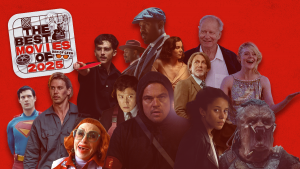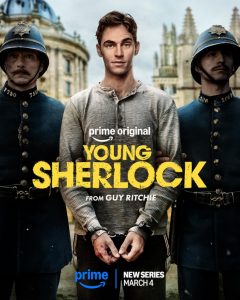Movies play a significant role in shaping the perspectives and worldviews of students. As a powerful form of media, films have the ability to influence opinions, attitudes, and cultural perceptions. Addressing media literacy in education becomes crucial to equip students with the skills needed to critically analyze and understand the messages conveyed through movies. This article explores the impact of movies on student perspectives and emphasizes the importance of integrating media literacy into educational curricula.
The Power of Cinematic Influence:
Movies, through their captivating visual and narrative elements, hold a distinctive influence over how students perceive various facets of life, ranging from historical events to societal norms and cultural values. The immersive experience offered by cinema has the ability to elicit profound emotional responses, making it a formidable medium for conveying messages and shaping beliefs. Recognizing the sway of movies on student perspectives is pivotal for educators and policymakers aiming to instill critical thinking and a discerning approach to media consumption. Understanding this influence serves as a foundation for developing educational strategies that empower students to engage with cinematic content thoughtfully.
Portrayal of Diversity and Stereotypes:
Movies play a crucial role in presenting diverse cultures, identities, and backgrounds. However, this portrayal can also perpetuate stereotypes and biases. Media literacy education becomes an essential tool for students to deconstruct these depictions, fostering a critical evaluation of accuracy and fairness. By cultivating an awareness of diversity and encouraging analytical thinking, educators empower students to challenge stereotypes, fostering an inclusive worldview. Through this lens, students can appreciate the richness of varied perspectives portrayed in movies while developing a nuanced understanding of the potential biases embedded in cinematic narratives.
Impact on Social and Cultural Values:
Movies serve as a reflective mirror, capturing and projecting societal values and norms. The themes, narratives, and characters depicted in films wield considerable influence over how students interpret and engage with social and cultural issues. Media literacy education equips students with the tools to question and analyze these messages, prompting a thoughtful examination of the values conveyed. This critical perspective enables students to engage in constructive dialogue about societal norms and navigate the nuanced challenges presented in cinematic narratives. By fostering this awareness, educators contribute to the development of students who approach media content with a discerning eye and a deeper understanding of its broader implications.
Educational Opportunities in Cinematic Exploration:
While movies can impact perspectives, they also provide rich educational opportunities. Integrating media literacy into the curriculum enables educators to harness the educational potential of movies. Films can serve as valuable tools for historical exploration, cultural studies, and literary analysis. Educators guide students to analyze cinematic techniques, narrative structures, and underlying themes, transforming movie-watching into a constructive and enlightening learning experience. By incorporating films into academic pursuits, educators leverage the visual and narrative power of cinema to enhance students’ understanding of complex subjects, fostering a dynamic and engaging learning environment.
Addressing Misinformation and Fake News:
In the digital age, misinformation is prevalent, and movies are not immune to contributing to these challenges. Media literacy education equips students with skills to discern credible information from misleading content. Encouraging critical questioning, fact-checking, and cross-referencing information presented in movies empowers students to navigate the complex media landscape responsibly. For instance, read in scamfighter review about services you are interested in. By fostering a mindset of skepticism and scrutiny, educators ensure that students approach cinematic content with an informed and discerning perspective, contributing to a broader culture of media literacy and responsible information consumption.
Promoting Critical Thinking and Analytical Skills:
Media literacy education transcends the decoding of messages in movies; it actively cultivates critical thinking and analytical skills. Students learn to question motives, evaluate sources, and consider diverse perspectives. These skills extend beyond the realm of cinematic analysis, becoming valuable assets in various academic and personal contexts, making students ask questions like “is papersowl.com safe?”. By nurturing a generation of learners who approach information with discernment and intellectual curiosity, media literacy education lays the groundwork for students to navigate complex issues and engage with media content thoughtfully throughout their lives.
Encouraging Active Engagement:
Media literacy education encourages students to move beyond passive consumption of movies and actively engage with cinematic content. By incorporating interactive discussions, critical reflections, and collaborative projects related to films, educators create an environment where students become active participants in the learning process. This approach transforms movie-watching from a mere recreational activity into a meaningful educational experience. Active engagement encourages students to question, analyze, and express their thoughts, fostering a deeper connection with the content and promoting a lifelong appreciation for the critical examination of media in all its forms. Through these participatory strategies, educators empower students to be not just consumers but informed and discerning contributors to the ever-evolving world of cinema.
Conclusion:
The influence of movies on student perspectives underscores the importance of media literacy education. By integrating critical analysis skills into the curriculum, educators empower students to navigate the cinematic landscape responsibly. Media literacy not only addresses the potential impact of movies on beliefs and attitudes but also transforms movie-watching into a constructive educational tool. As students become adept at decoding the messages embedded in films, they develop the skills needed to navigate the complexities of media, fostering a generation of informed and discerning learners.






